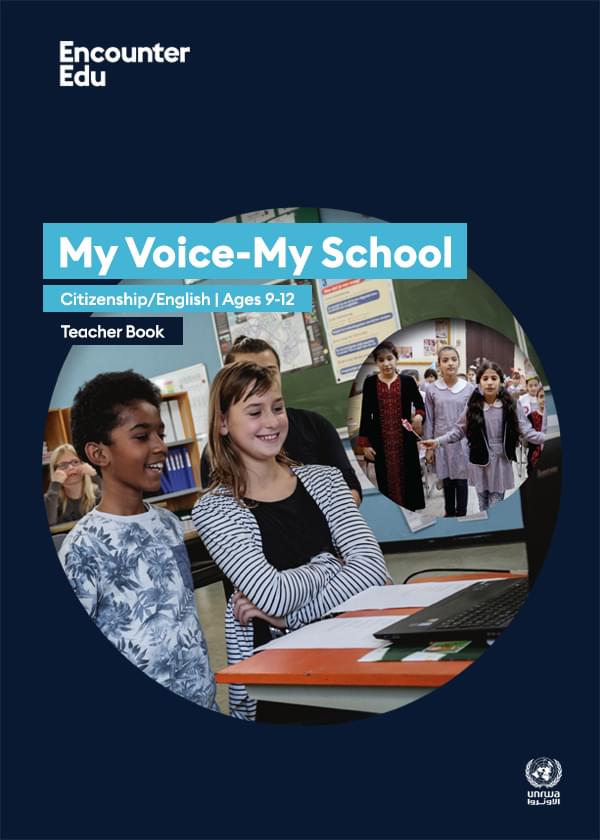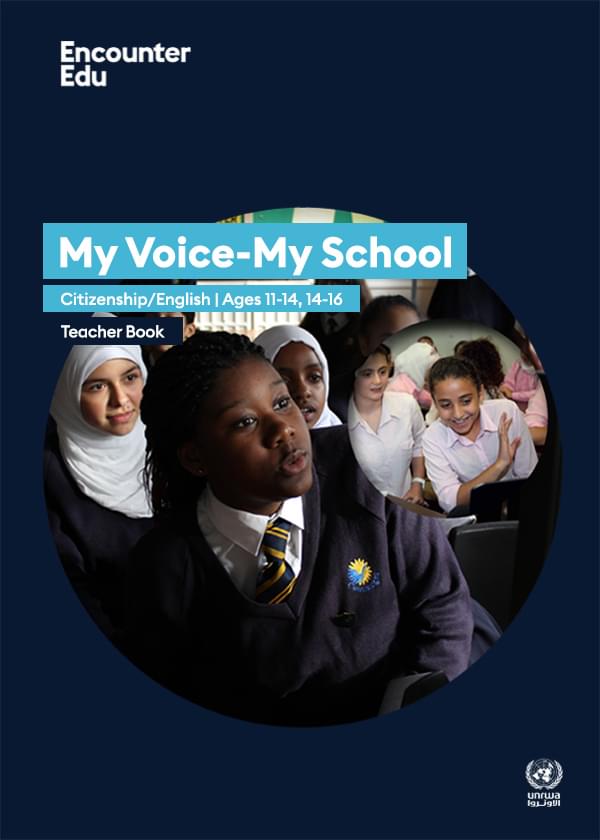How to: Debate via video chat
Any lesson that involves connecting to another classroom will be exciting for your students and will offer new ways of learning and collaborating. The notes below are to help you maximize the learning for your class and to build confidence in using video chat as an educational tool. When using educational technologies such as video chats, there are two areas to focus on: the technology and the learning.
There is further technology guidance in Subject Update: How to: Use Google Hangouts Meet on using the chosen video chat tool for My Voice-My School, Google Hangouts Meet, to ensure you have the right set up for your classroom. If possible, try to make contact with your partner class prior to the video lesson, and even try a practice call to ensure that the technology works. This will help to reduce any nervousness you may have about using video chat in the classroom. It will also allow time to discuss the focus of the lesson, and provide background about your students and the resources that are being used. Teachers may want to go through some of the questions raised in preparation for the video lesson to ensure that any potential sensitive issues are considered beforehand (see Subject Update: How to: Work with sensitive issues).
Learning
The key to a successful video chat lesson is structure. All three video lessons have detailed notes included in the relevant teacher guidance. These plans break the allotted time into chunks to make the lesson easier to manage. Following the timing carefully will help to make a more successful lesson and allow all students to contribute equally.
Classroom set-up
You may wish to change your classroom set-up for video lessons to suit class discussion. A recommended set-up for a video lesson:
- Place chairs for your nominated spokespeople in a series of semi-circles facing the computer, interactive whiteboard or screen.
- Desks can be moved to the back or side of the classroom, so that they are not 'barriers' to the conversation.
- Students speaking should be near the computer webcam and microphone.
Facilitating classroom debate and discussion
During the My Voice-My School project, your role will shift from that of traditional knowledge-giver to facilitator. Here are some active techniques that you can use to facilitate debate and discussion in class.
- Set the scene by referring to the aims of the debate or discussion, why it is taking place and any class guidelines for behavior.
- Keep the debate flowing by asking students to clarify their points, eg 'What do you mean by that?'
- Re-energise a discussion by asking student questions like 'Would it be fair to say...?' 'I think... Do you agree with this?'
- If comments are off-topic, don't be afraid to steer the discussion back gently, 'I don't think that's the focus for today's discussion, but we can talk about it next lesson.'
- Link students' comments to points that other students have made, eg 'That's an interesting point, but have you thought about what [name] said earlier?'
- Moderate airtime. If one or two individual students are taking up all the discussion time, try a comment like [name], your comments are very good, but I just want to give someone else a chance.
- Deal with insensitive comments immediately, first by referring back to the class guidelines and if necessary following school policies for bullying.
- Some of the debate may be emotional for some students. Allow them the space and time they need to step away from the discussion and come back to it when they feel ready. Follow-up in class or through the school student welfare or support systems as appropriate

Citizenship / English | Ages 7-11, Ages 11-14
My Voice-My School
My Voice-My school gives students the opportunity to share their ideas about education and their future. The project is grounded in the UN Global Goals for Sustainable Development, with a focus on Goal 4 Quality Education. These lesson plans and resources for ages 9-12 are based on video conversations between schools.

Citizenship / English | Ages 11-14, Ages 14-16
My Voice-My School
My Voice-My School focuses on the topic of quality education as enshrined in the United Nations Global Goals for Sustainable Development. Connecting UNRWA's schools with partner schools overseas, the project seeks to stimulate student conversation about quality education and what individuals and communities can do to help make it a reality for all.